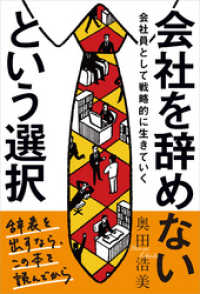Full Description
This volume applies interpretive video‑analysis to explore the intersections between the sociology of knowledge and interaction studies. Presenting a series of studies that draw on video‑analytic and videographic approaches to research, it examines the way video data can shed light on connections between social phenomena at the micro‑, meso‑, and macro‑levels, and the access that it grants to the temporality of social reality. With empirical research in fields such as care, consumption, gaming, military, music, science, and violence, the studies in this volume show how the video‑analytic approach provides an empirical basis for progress in social theory and aids the development of the concept of knowledge. As such, it will appeal to scholars of sociology with interests in social theory, the sociology of knowledge, and visual methods in social research.
Contents
1. Knowledge on rewind: how video analysis contributes to social theory; Part I. Embodied coordination of action and the social impact of sensuality;2. Making music together: on the sensuality of string ensemble playing; 3. Dementia, bodies and technologies of the We: a video Analysis of interactions under conditions of uncertainty; Part II. Social norms and spatial figurations; 4. The spatial and communicative forms of keeping social distance: videographic accounts of public interaction from the first phase of the COVID-19 pandemic; 5. Queueing interaction bodies: indexicality and (mis)interpretations of bodily-spatial arrangements in spaces of consumption; Part III. Media, mediatised communication, and technologically mediated practices; 6. Layered bodily modalities: on the interplay of presence and representation in virtual multiuser environments; 7. On the meaning of sexualised violent music videos: researching youth scenes and their artifacts; Part IV Video, violence and its forms of visual representation; 8. Killing from a distance: insights into contemporary warfare with video analysis; 9. Fighting styles and bodily knowledge in street fights; Part V Communicative construction of science; 10. Communicatively constructing lines between publics and science: video analysis in the field of science communication; 11. Experimenting in the economic laboratop: on the interplay of performance and performativity in the production of economic research data; Part VI. The meaning of video and the (re)use of video data;12. Video as a medium of placeness: exemplified by a case of second breakfast in an educational setting; 13. Communicative genre analysis, communicative budget and archiving and re-using audio-visual research data








